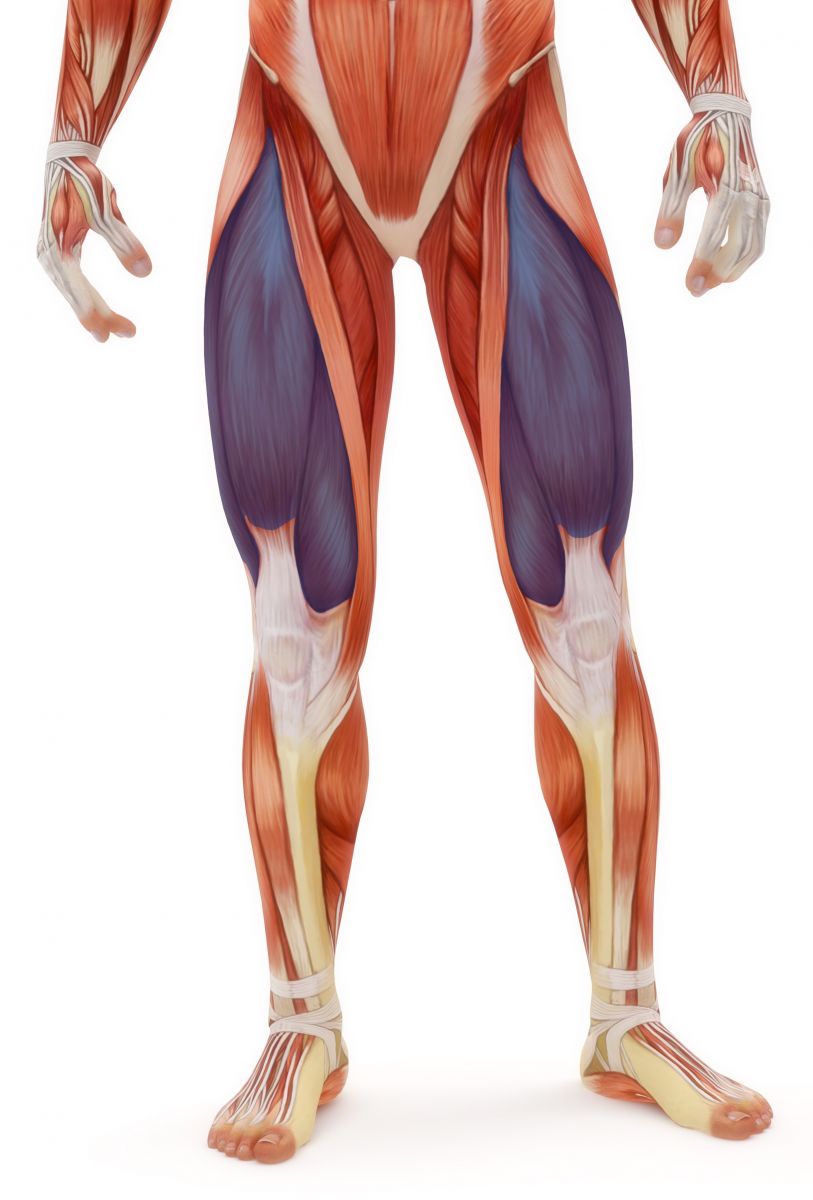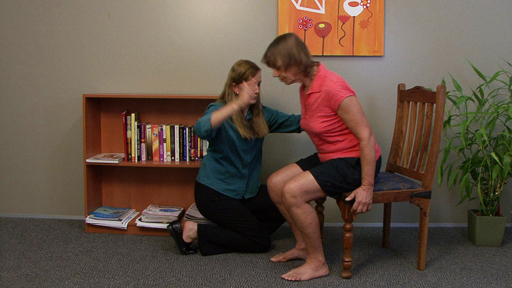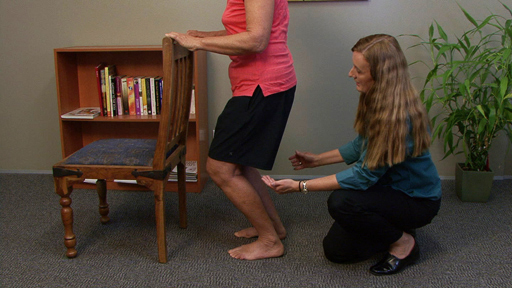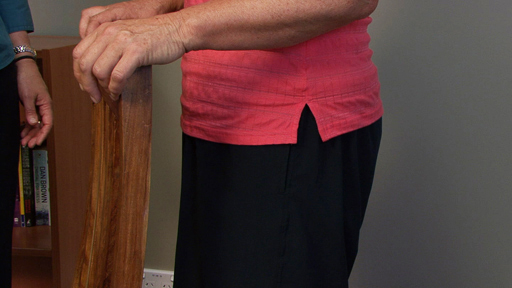Aim
To help strengthen the muscles needed to make sitting easier.
Introduction
Sitting can be difficult when osteoarthritis is present in the knee/s. This can be due to various symptoms, such as, pain, weak muscles and poor joint range. Conservative management can lessen the difficulty with a specific exercise regime and planning techniques.


Factors contributing to difficulty sitting
The quadriceps (front of thigh muscles) and the buttock muscles are the main muscles used when sitting. They work in a reverse manner to their normal action of straightening the knee and keeping you upright. When sitting, the muscles slowly lengthen in a controlled manner to lower you down. Weak muscles are unable to perform this controlled movement well. Sitting is also made more difficult if the knee/s will not bend adequately.
Sitting exercises
In the longer term you need to work on some underlying issues that contribute to the difficulty. The key objectives are to improve the flexion (bend) in your knee/s and to strengthen the quadriceps muscles and buttock muscles.
This group of exercises has been specifically designed to help improve knee flexion and to strengthen the quadriceps and buttock muscles.

Sit to stand with correct technique (view video)
The aim of this exercise is to strengthen your gluteal (or buttock) muscles, strengthen your quad (or front of thigh) muscles and to improve your ability to stand up from a chair.
(Book reference Level 3 exercise 4)

Knee extension in sitting (view video)
The aim of this exercise is to strengthen the quads (front of thighs) muscles.
(Book reference Level 2 exercise 4b)

Mini chair squats (view video)
The aim of this exercise is to strengthen the gluteal muscles, or your buttocks, and to strengthen the quad, or front of thigh, muscles.
(Book reference Level 2 exercise 4)

Standing buttock squeeze (view video)
The aim of this exercise is to activate your gluteal muscles (your buttocks) and to stretch your hip flexors.
(Book reference Level 1 exercise 8b)
Short term management strategies and tips
- Avoid low chairs, but not too high that your feet do not rest comfortably on the floor when seated. Use chair with a firm seat. Arm rests can be helpful if sitting is difficult.
- Ensure you can feel the chair against the back of your legs before you sit. Bend forward at the hips to bring your nose over your toes and place hands on seat or arm rests. Maintain this position as you gently lower your bottom onto the seat. Keep looking at your feet until you are seated, if you lift your head too soon it can cause you to flop down. Ensure you sit well back so your thighs are supported. There should be a small gap between the back of your knees and the front of the seat (for circulation). If necessary, place a small pillow/cushion behind your back but make sure you maintain a good posture.
- If your knee becomes painful as you lower down, slide this foot forwards to avoid excessive bending, keeping good leg in original position.
- Do not sit for too long at a time. Get up and have a stretch and a short walk to avoid stiffening up.
Safety considerations
- Suggested repetitions are a guide only.
- If needed, do fewer or break the repetitions into smaller sets with a short rest in between.
- Aim to build up (over a few weeks) to doing strengthening exercise daily.
- Mild discomfort could be expected when commencing new exercises but no lasting increase in pain.
- Do not continue exercising with increasing pain or pain that is moderate to severe.
- Performing exercises too fast often reduces their effectiveness - don't be in a rush to finish, and only exercise within your physical capabilities.
